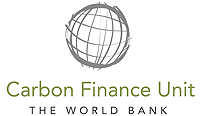The Carbon Fund for Europe (CFE) was established in March 2007 as a trust fund administered by the World Bank, in cooperation with the European Investment Bank (EIB). Through this partnership, the EIB brought its intimate knowledge of the European economy while the World Bank brought its expertise and experience in the carbon market. The fund purchased project-based credits eligible under the Kyoto Protocol’s Clean Development Mechanism (CDM) and Joint Implementation (JI), as well as under the European Union Emissions Trading Scheme (EU ETS). The CFE could purchase carbon credits generated by a project beyond 2012, up to a limit of 40 percent. The fund could also purchase assigned amount units (AAUs) from Green Investment Scheme projects up to a maximum of 20 percent of its capitalization.
- About
- Scope of work
- Structure and governance
- Funding
- Objectives
- Participants
- Fund publications
- Multimedia
- Media coverage
About
Scope of work
The Fund was purchasing greenhouse gas emission reductions through the Kyoto Protocol’s Clean Development Mechanism (CDM) and JI from climate-friendly investment projects from either bank’s portfolio, as well as from standalone projects
The Fund acquired greenhouse gas reductions on behalf of the participants and helped project sponsors develop projects intended to reduce greenhouse gas emissions. The CFE was directed towards the EU Member States and the European private sector. Carbon credits were purchased from projects eligible under the Kyoto Protocol’s Clean Development Mechanism (CDM) and JI and were compatible with the EU ETS in order to facilitate the participation of private companies with EU emission reduction requirements.
The CFE was purchasing greenhouse gas emission reductions from projects in the developing world or in countries with economies in transition for the account of the fund participants, and paid on delivery of those emission reductions. The emission reductions could be used against obligations under the Kyoto Protocol or for other regulated or voluntary greenhouse gas emission reduction regimes.
The Fund gave preference to projects with relatively short lead times in order to maximize the generation of credits that could be used for the second phase of the EU ETS. The Fund was interested in projects that already had clear implementation plans and had a defined operational start date. It considered all types of emission reduction or removal projects. Anyone could submit projects to the Fund, as long as projects were credible and financially sound. Projects were supposed to be able to offer a minimum annual emission reductions volume of 100,000 tons.
Objectives
Building on a dynamic pipeline of projects in a diverse set of technologies, the fund was focused on supporting the advancement of developing countries toward sustainable development by fostering investment in clean technology projects, complementing private sector development in emerging carbon markets, and seeking ways to support essential private carbon market development.
Participants
| Public sector | |
| Luxembourg | Government of Luxembourg |
| Ireland | Government of Ireland |
| Belgium | Government of the Flemish Region (Belgium) |
| Portugal | Fund Portugese Carbono |
| Private sector | |
| Netherlands | Statkraft Carbon Invest AS |





